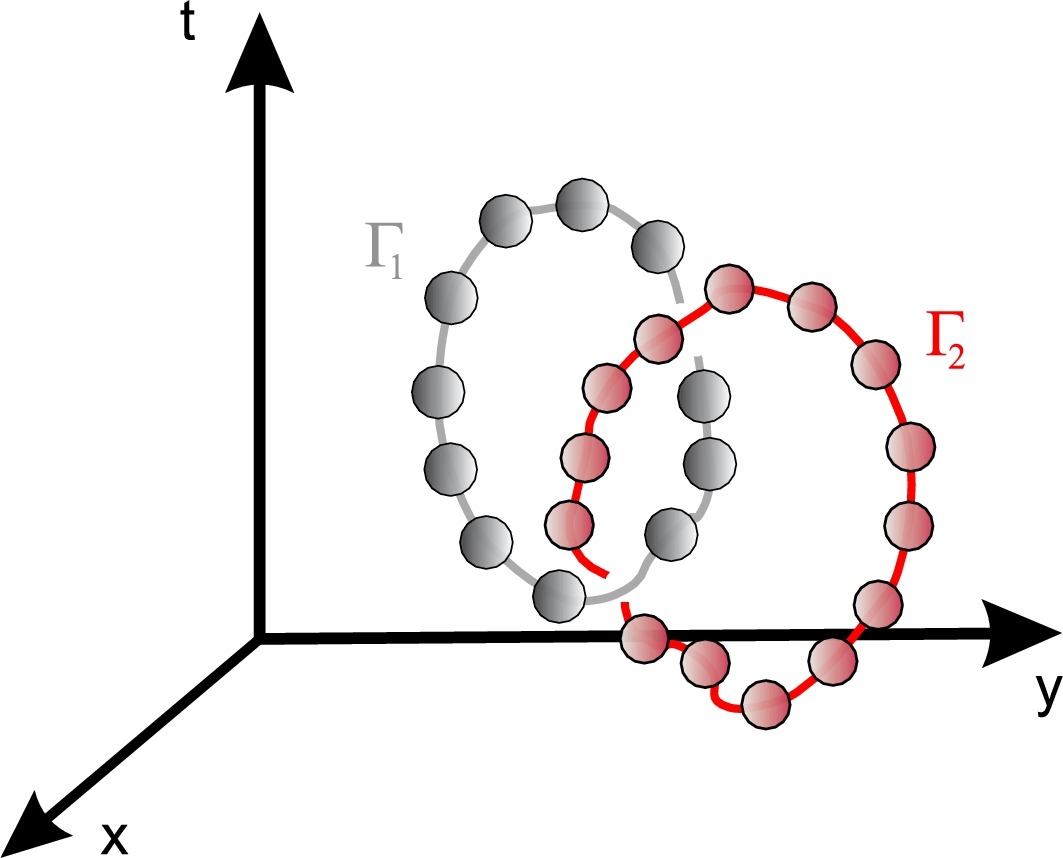The field theory approach to the statistical mechanics of a system of N polymer rings linked together is extended to the case of links whose paths in space are characterized by a fixed number 2s of maxima and minima. Such kind of links are called 2s-plats and appear for instance in the DNA of living organisms or in the wordlines of quasiparticles associated with vortices nucleated in a quasi-two-dimensional superfluid. The path integral theory describing the statistical mechanics of polymers subjected to topological constraints is mapped here into a field theory of quasiparticles (anyons). In the particular case of s=2s=2, it is shown that this field theory admits vortex solutions with special self-dual points in which the interactions between the vortices vanish identically. The topological states of the link are distinguished using two topological invariants, namely the Gauss linking number and the so-called bridge number which is related to s. The Gauss linking number is a topological invariant that is relatively weak in distinguishing the different topological configurations of a general link. The addition of topological constraints based on the bridge number allows to get a glimpse into the non-abelian world of quasiparticles, which is relevant for important applications like topological quantum computing and high-Tc superconductivity. At the end an useful connection with the cosh-Gordon equation is shown in the case s=2.
Download “Article” Knots_links_anyons.pdf – Downloaded 464 times – 776 KB
Download a copy of the manuscript

